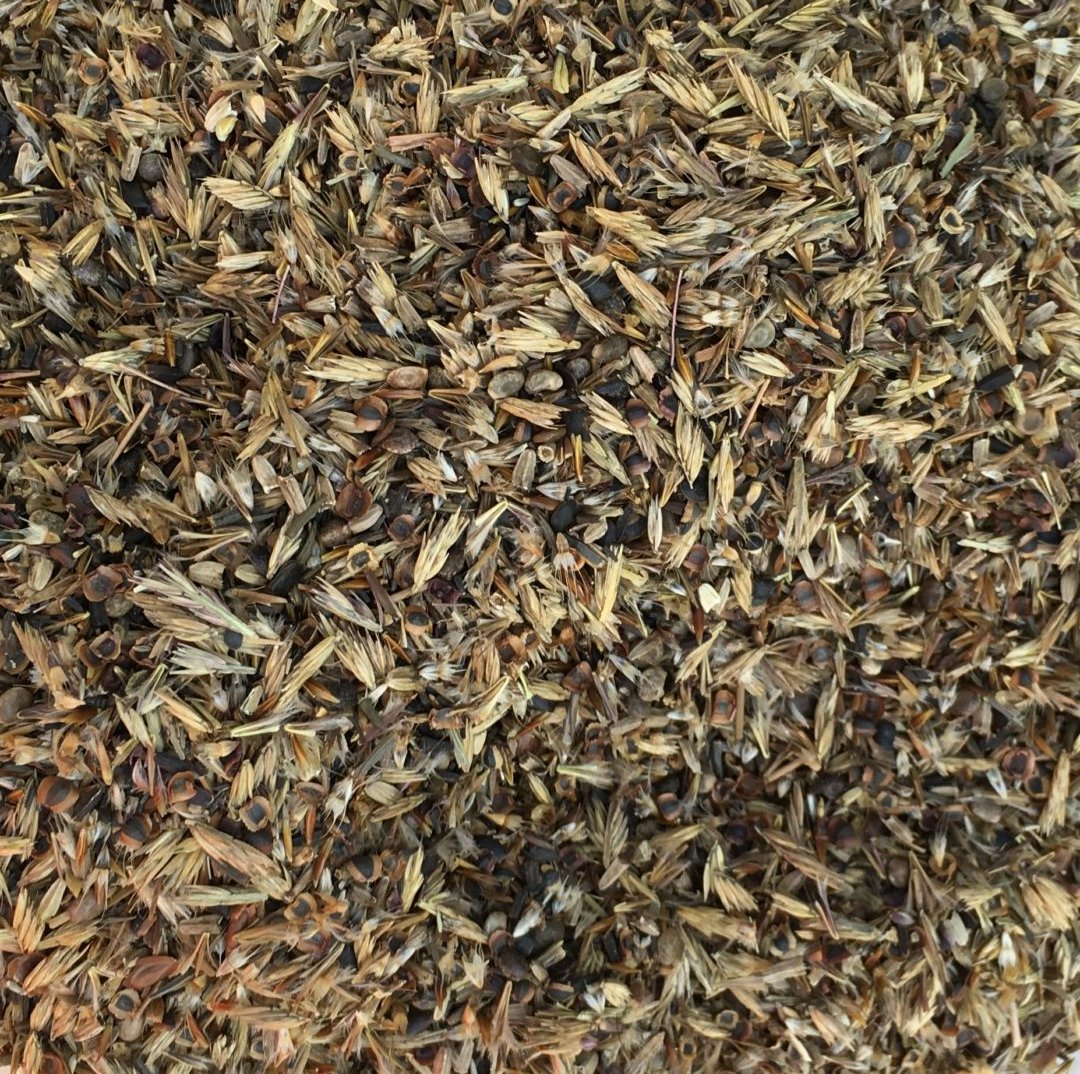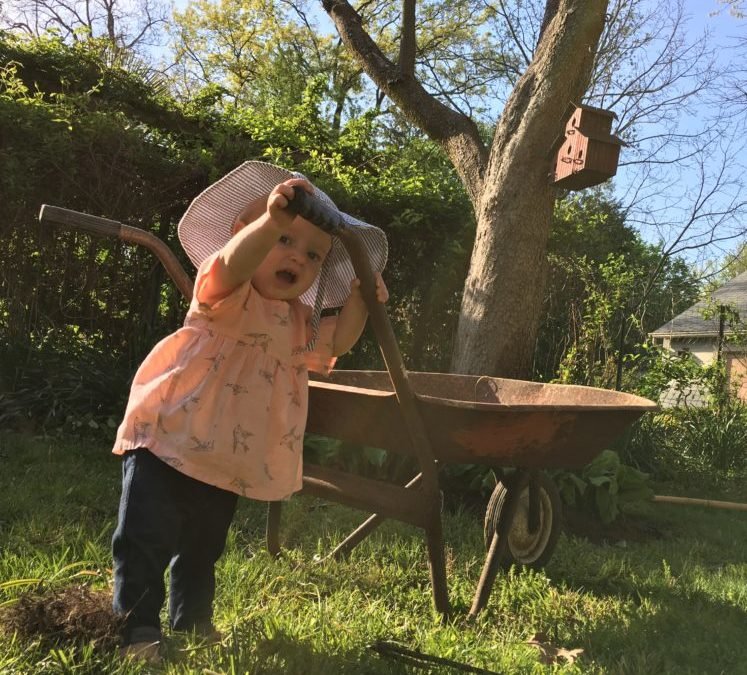Making Our Meadow - Part Three
Choosing the Seed
This proved more difficult than we initially thought, as it’s pretty easy to get overcome by all the options on the internet. We figured the easiest and cheapest thing would be a pre-made mix of wildflower seeds, but a lot of them didn’t fit our needs. First off, we wanted to stick with all native perennials, so that ruled an awful lot of mixes out, including pretty much any that you’d find at garden stores (most of the garden store mixes are primarily annuals, so you get a nice show the first year then very little after that).
We also soon realized that most mixes, even those that were explicitly for meadows and not just wildlflower mixes, didn’t contain any grass. A healthy meadow will have a significant grass population. The root systems of native grasses keep weeds at bay, and the tall stalks help to support wildflowers.
We ultimately settled on this mix of Northeast natives to use as a base. If I could do it again, I would have focused more on trying to find local eco-types for the seeds, but I like the species that are in this mix. Because we have more shade than is ideal, we added a few ounces of purple coneflower and cardinal flower seeds to have a few extra species that could handle part shade, and we made sure to concentrate those seeds in the shadier zones. Finally, we added plenty of native grass seed, specifically Indian grass, sideoats grama, and little bluestem that we ordered from a different site.
So by mid April, we had our seed (above, fully mixed) and frost danger was past, but there was still one problem - we had to get rid of our lawn.
My assistant
Removing the Grass
This is the other big area where there are a number of competing methods. In order to get down to the bare soil you need to establish your meadow on, you can either cut through the roots of the sod and remove it, hit your grass with at least two treatments of herbicide followed by tilling (or hydroseeding), or solarize your lawn to death by covering it with plastic sheets, newspaper, or cardboard, and letting it die over the course of a summer.
Since we didn’t want to use herbicides or wait all summer, we opted for the first option. I rented a sodcutter (and a truck to carry it because it’s huge and heavy) for an afternoon to tackle the removal. Remember, this is just 1500 square feet, so it wasn’t a major job. In an earlier post, I said that once they’re established[meadows] require virtually no inputs. Anyone who glosses over that ‘once established’ clause is in for a very rude shock when they try to create their own.
The sod cutter is a handy little machine. It took a few tries to get the hang of it, but once I did, it wasn’t too bad to use. A mechanical blade slips under the grass at the depth you set and cuts below the roots in kind of a sideways karate-chop motion, separating the grass from the topsoil. In theory, once you make a pass, you can just roll the sod up like a carpet behind the cutter, and you’re good to go. But that theory also posits that you have at least one person helping to remove that sod while you run the cutter. If you don’t, then you quickly find that it's very difficult to line up your rows without being able to see that dividing line of fresh dirt and turf. Because I only had the machine for a few hours, I had to run it over the whole area, hope I got all the turf cut well, return it, then come back home for the actual removal.
Two quick things: Sod is heavy as hell. And it takes up an awful lot of space. I’d laid it a few times from pallets in my summer jobs with landscapers. But it’s way heavier coming up. I figure that the 1500 sf I cut and hauled to a spot behind the garage weighed 6 or 7,000 pounds. You can only roll a few square feet at a time before the roll is too heavy to lift. And that’s if you’re lucky enough that it lifts cleanly without falling apart or having a section that’s still attached to the ground.
As I began to remove it, I quickly realized how imprecise my lines were. I probably had a roughly equal amount of 4 inch strips that I missed cutting entirely and already cut strips that my next pass sliced in two, making it much harder to roll up. I wasn’t going to pay to have the sod hauled away, so I figured I’d pile it up behind our garage, and after a year or so I’d have some decent compost. But I quickly overflowed from the space I had set aside.
When I was done that afternoon I had a gargantuan pile, but also dozens of patches that the cutter had either missed entirely or not cut down deep enough to remove. I had hoped to have the seed in that day, but I had to surrender at that point and tackle it the next day.
The following morning I went after all of the patches my amateur sodcutter operation had left behind. My weapon of choice was my trusty garden shovel. At first it was pretty backbreaking to cut through even a small section. Then I spent about twenty minutes sharpening the blade of my shovel and that made the cutting a piece of cake (though I still had to stop and re-sharpen every half hour or so). It still took me several hours to finish clearing the small patch, and finally I was left with a beautiful patch of bare soil.
Almost ready for seed
Seeding the Meadow
Getting rid of the grass was the hard part. It only took a few minutes to get the seed down. First I mixed up all of the various seeds we had bought. Then I divided the seed into two halves to make it easier to distribute evenly. Then Lindsay and I broadcast them over our area after roughing up the soil a bit with a rake. This was tough to do well since the seed ranged from large capsules to tiny powder-sized seeds. It’s not as easy as spreading regular turf seed because you’re using far fewer seeds per square foot. You really feel like there’s not enough, but remember that each one that germinates will take up a decent amount of space. Since they’re all native seeds, watering wasn’t as critical as it would be for a turf lawn (they all evolved to germinate in NJ’s conditions). But we wanted a higher germination rate than you’d get in the wild (plus we were starting from a blank slate), so we did water throughout the spring. But what you don't need to do is till or amend the soil in any way. These are wildflowers, so you're not looking for traditional garden soil. They evolved to grow in natural and sometimes harsh conditions. I even came across one person in my research who was certain that the worse the soil was, the fewer problems you'd have with weeds in a wildflower meadow.
After a celebratory milkshake and porkroll sandwich from the local drive in (yes, that's right, I just casually dropped the fact that we have a local drive in, and no, the servers aren't on rollerskates), there was nothing left to do but wait to see what would grow. Check back in with Part Four to see how our meadow did through its first summer!



